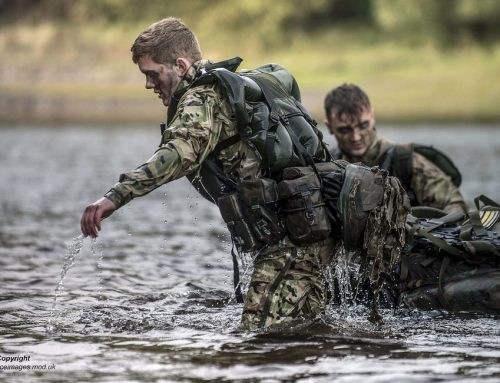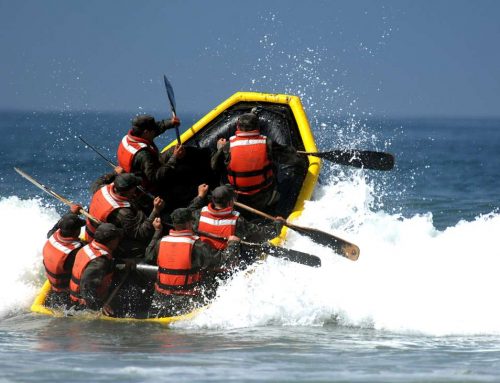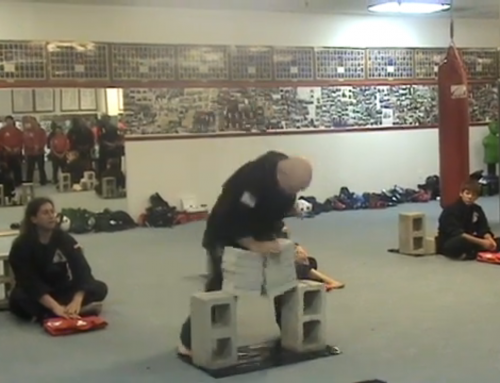Delegation – The Key to Team Member Development
I learned a great lesson in how to delegate while on deployment in 1993. I was asked to plan a mission to defend the USS Nimitz and her battle group from incursions by the Russian Federation. We were in the western Pacific and a month or so earlier a Russian bomber had overflown a different carrier without an escort and our admiral was not about to have the same happen to us.
Normally Air Wing Operations created these plans. I remember the Air Wing Commander’s (CAG) calling me to his office. Although I had flown with the CAG a number of times this was my first time being called to his office. I remember leaving his office simultaneously honored and nervous (although as a fighter guy I would never admit to the latter). This was a great opportunity but the line between hero and bum is razor thin and I didn’t want to cross it. I had no idea where to begin and what I was going to do. Although I was a qualified Mission Commander by then my planning responsibilities were limited to the 2 or 4 aircraft I flew with on any given mission. Now I had to plan the entire mission.
How to Delegate
I was not left completely on my own. The Operations Officer (Ops O) of the E2 Hawkeye squadron contacted me shortly after my meeting. E-2 are the aircraft with the giant Frisbee on their back and they are our airborne early warning radar. It is there job to detect anything heading towards the carrier and then control the fighters if needed. We worked very closely together.
The Ops O had heard of my assignment and wanted to see if I would use a new tactic he had devised. I thought this would solve all of my problems. Over the next week, I learned how wrong I was. Although a great starting point there was much more to do. I was faced with a myriad of logistics problems. Problems I had never even considered from how to get the right mix of aircraft on the flight deck, where they could be staged, fuel and contingencies for high sea states to how to de-conflict the fighter cover with anti-air missile batteries our escort ships used. The task seemed enormous. I never considered what it took to plan an operation like this.
Fortunately, CAG new how to delegate. I had periodic meetings with him and the CAG Ops Officer. CAG reviewed my plans and asked me detailed questions. When I didn’t have a good answer, I went and got one. The CAG green lighted the mission after a final briefing. The mission went off without a major hitch. Afterwards, we debriefed to fine tune the mission for the next time we needed it.
I imagined the lessons learned would be hugely beneficial for my naval career. I was wrong. The lessons I learned on how to delegate have served me well in the years since.
The 6 -keys to successful delegation:
- Outline your mission objectives – make sure you know what success looks like. In my case there were to objectives (1) make sure that no aircraft entered within the missile launch zone without being visually determined to not be armed and (2) make sure no aircraft flew over the battle group without a fighter escort
- Make sure you provide sufficient resources – The CAG provided me with access to departments and personnel with whom I didn’t normally work.
- Check on the progress at sufficient intervals to make corrections if needed – you don’t want to do the work but you need to make sure the task doesn’t go off track. The frequency will vary based on the experience level of the team member to whom you delegated, the complexity of the assignment and time line for completion. Since you are the one with the experience doing the assignment, you decide.
- Ask questions rather than make suggestions. Your should word your question to show how you think about a problem. Ask questions that point out potential pitfalls like “What are the possible negative consequences?” instead of giving specific direction. Only give specific direction when absolutely necessary. You are trying to develop a mindset and skill, not create a voice activated robot.
- Review one final time before executing
- After implementation have a debrief about the process and the initiative. This is your chance to determine if they actually understood all the lessons learned.
Remember, the more you delegate the easier it becomes. You will identify who are your superstars, your journeymen and your also ran.










